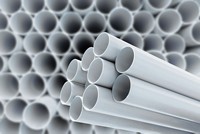Advertisement
Grab your lab coat. Let's get started
Welcome!
Welcome!
Create an account below to get 6 C&EN articles per month, receive newsletters and more - all free.
It seems this is your first time logging in online. Please enter the following information to continue.
As an ACS member you automatically get access to this site. All we need is few more details to create your reading experience.
Not you? Sign in with a different account.
Not you? Sign in with a different account.
ERROR 1
ERROR 1
ERROR 2
ERROR 2
ERROR 2
ERROR 2
ERROR 2
Password and Confirm password must match.
If you have an ACS member number, please enter it here so we can link this account to your membership. (optional)
ERROR 2
ACS values your privacy. By submitting your information, you are gaining access to C&EN and subscribing to our weekly newsletter. We use the information you provide to make your reading experience better, and we will never sell your data to third party members.
Materials
Lego plants to be made from plants
Danish firm adopts biobased polyethylene as a first step to phasing out fossil-fuel-derived polymers
by Alex Scott
March 8, 2018
| A version of this story appeared in
Volume 96, Issue 11

Lego, the Danish toy company famous for its plastic bricks, has started making the botanical elements—such as leaves, bushes, and trees—in its kits from polyethylene derived from sugarcane.
The move is a first step in a plan the company announced in 2015 to reduce its impact on the environment by phasing out fossil-fuel-derived plastic. It doesn’t affect Lego’s iconic bricks, which are still made from acrylonitrile-butadiene-styrene (ABS), a copolymer of three petrochemicals.
The Brazilian firm Braskem, which has a process for converting ethanol from sugarcane into ethylene, the precursor for polyethylene, is Lego’s supplier. The sugar will be certified as responsibly sourced by Bonsucro, a sustainable sugar organization. According to Braskem, each ton of biopolyethylene it makes consumes 3.09 metric tons of carbon dioxide from the atmosphere.
Initially, Lego will make only the botanical elements, or 1–2% of its plastic parts, using the biopolyethylene. “We are proud that the first Lego elements made from sustainably sourced plastic are in production and will be in Lego boxes this year,” says Tim Brooks, the firm’s vice president for environmental responsibility.
Lego has no immediate plans to use biopolyethylene to make the firm’s iconic blocks. Finding the right material for the blocks presents a particular challenge. In 2012, Styrolution, an ABS supplier to Lego, told C&EN that the raw material has to be made to an exact specification so that the blocks lock together and then come apart with just the right amount of force. Polyethylene, which isn’t as tough as ABS, may not be up for the job.
In 2014, Lego used 77,000 metric tons of raw materials to create more than 60 billion pieces. Braskem has capacity to produce 200,000 metric tons per year of biopolyethylene in Brazil.
In announcing the initiative in 2015, Lego said it would spend $150 million and hire more than 100 staffers to research and develop sustainable raw materials to replace petrochemical-based polymers by 2030.
Lego has been working with the World Wildlife Fund and the Bioplastic Feedstock Alliance on the project. “The Lego Group’s decision to pursue sustainably sourced biobased plastics represents an incredible opportunity to reduce dependence on finite resources,” says Alix Grabowski, a senior program officer at WWF.




Join the conversation
Contact the reporter
Submit a Letter to the Editor for publication
Engage with us on Twitter